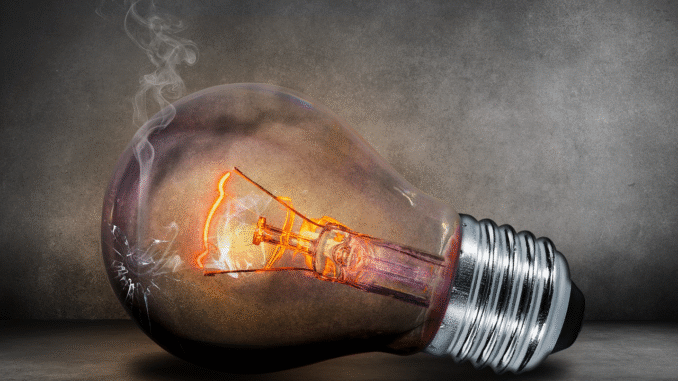
By Matt Rooney
Let’s start with the facts: our electric bills are exploding.
Massive 17% to 20% increases took effect on June 1, 2025 and another 5% increase is anticipated next summer. All of these exorbitant increases come on top of the 40% surge we experienced between 2019 and 2024 when rates jumped from 15.9 to 22.3 cents per kilowatt hour. Some resident ratepayers now report that their bills have doubled or even tripled from last summer. Policymakers in Trenton have been warned for years that a New Jersey energy crisis was looming. They did nothing to stop it. In fact, they exacerbated it.
Now, they’re anxiously searching for scapegoats to blame.
History tends to repeat itself. When Hubert Humphrey famously observed, “[t]o err is human. To blame someone else is politics,” he could have just as easily been describing the sorry state of New Jersey’s ongoing debate over our manmade energy crisis.
Radical environmentalists and foreign-backed green groups are blaming the coalition that successfully stopped massive, whale-killing offshore wind projects. The Left is scapegoating PJM Interconnection LLC, the regional transmission operator that merely coordinates electricity distribution across thirteen states and D.C. Others reflexively point their collective finger at President Donald Trump because, well, that’s what they always do.
The truth is simpler, though less convenient for the guilty parties: New Jersey doesn’t produce enough of its own energy. And worse, that deficit is the product of deliberate policy choices.
Here’s the math: on average, New Jersey requires about 11,500 megawatts (MW) of electricity daily when demand is low, but peak summer demand surges to around 19,000 MW. In 2023, the state’s in-house capacity was just 16,838 MW. By June 2025, New Jersey was importing an average of 8,000 MW during peak hours. This dependency is growing fast: in 2016 we were net exporters, but by 2023 we imported 20% of our power, 35% by spring 2025, and 43% so far this summer.
Simply put, importing power costs more than producing it in-state. At the same time, demand is expected to rise another 2.8%–4.7% over the next decade. Supply will shrink further unless New Jersey relaxes its restrictive CO2 regulations, bans on certain fuels, and mandates for electrification, gas stove bans, and electric vehicle (“EV”) adoption.
These costly policies remain on the books despite sweeping federal reforms under President Trump.
Meanwhile, Trenton wasted billions trying to prop up the failing offshore wind industry, forced the closure of the state’s last two coal plants in 2022, and oversaw the 2018 shutdown of the Oyster Creek nuclear facility. In total, six plants in total have been shuttered in recent years without being replaced. PJM’s Sr. Vice President, Asim Haque, warned Congress, “renewable resources do not replace thermal dispatchable resources 1-for-1” — it takes multiple megawatts of renewable energy to replace one megawatt of dependable, traditional energy. Closing baseload plants and pretending wind could fill the gap was always a recipe for instability.
The solution isn’t complicated.
New Jersey must immediately expand affordable, reliable generation — natural gas and new or revitalized nuclear energy. In terms of electricity generation, one gas plant does the work of an entire fleet of solar projects, and it does not necessarily stop producing when the sun goes down. Instead of corporate welfare for offshore wind, we should be building in-state capacity, strengthening our grid, and withdrawing from the ruinous Regional Greenhouse Gas Initiative.
Unfortunately, Trenton’s latest 2024 Energy Master Plan doubles down on fantasy: it demands 5 gigawatts of new offshore wind online by 2030. But, every sensible developer has already walked away. Any replacements would need to navigate New Jersey’s notorious red tape and build hundreds of turbines in less than 4.5 years. That’s not a serious plan; it’s a pipe dream.
New Jersey is running out of time. The path forward is clear: More nuclear. More gas. Less gaslighting. Only these sources can bring down prices and deliver reliable electricity for New Jerseyans. That’s the future I want — and I suspect I’m not alone. What’s needed now is the will, and America First policies, to power us there.
—
Matt Rooney serves as executive director for the New Jersey chapter of the America First Policy Institute (AFPI), the nation’s leading voice for America First policies. Rooney is also a practicing attorney, a radio host, and owner of SaveJersey.com, the state’s leading conservative media outlet.


